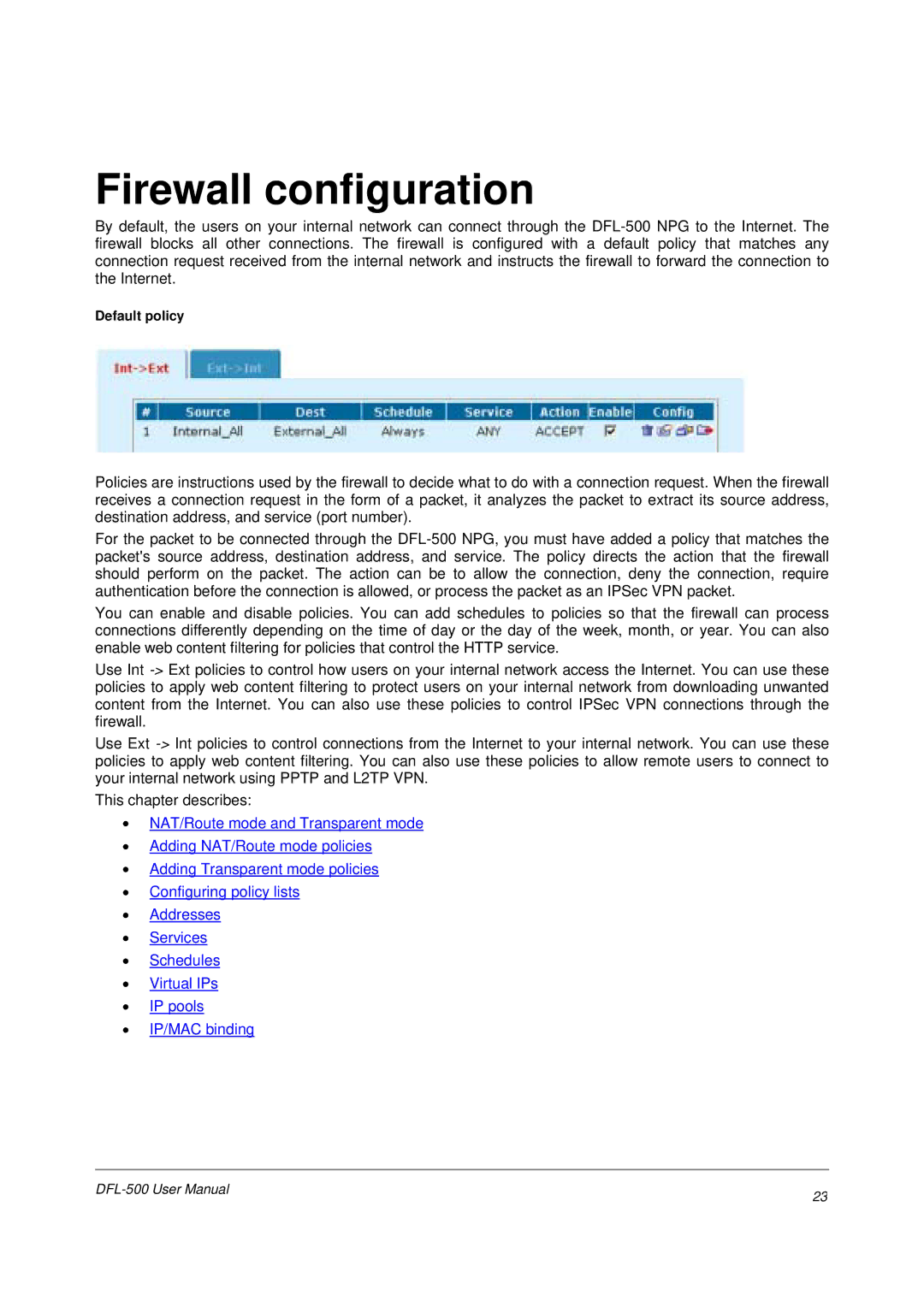
Firewall configuration
By default, the users on your internal network can connect through the
Default policy
Policies are instructions used by the firewall to decide what to do with a connection request. When the firewall receives a connection request in the form of a packet, it analyzes the packet to extract its source address, destination address, and service (port number).
For the packet to be connected through the
You can enable and disable policies. You can add schedules to policies so that the firewall can process connections differently depending on the time of day or the day of the week, month, or year. You can also enable web content filtering for policies that control the HTTP service.
Use Int
Use Ext
This chapter describes:
•NAT/Route mode and Transparent mode
•Adding NAT/Route mode policies
•Adding Transparent mode policies
•Configuring policy lists
•Addresses
•Services
•Schedules
•Virtual IPs
•IP pools
•IP/MAC binding
23 | |
|
